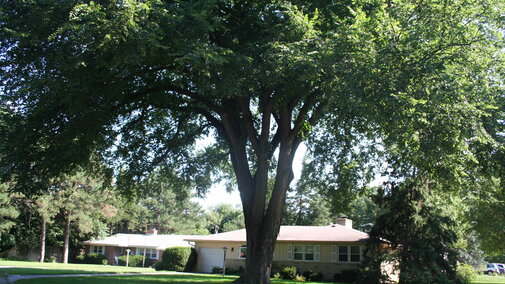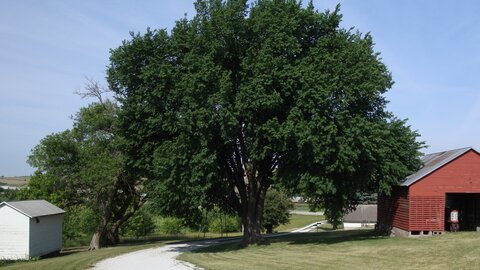Ulmus americana
,
Deciduous
Origin:
Native to Nebraska
For the first hundred or so years after settlement, American
elm dominated community skylines across the state especially along streets where its tall, arching habit provided leafy
canopies for blocks at a time.

Where To Grow
Varieties resistant to Dutch elm disease can be planted throughout the state. As with all trees, its success is determined by the soil
type, amount of available moisture, and adjacent infrastructure (buildings, roads, etc.).
Suitable to plant throughout the state.
Size at Maturity
Tree Height
Tree Spread
50-80'
50-80'
Wildlife Benefits
The blooms are followed by green, wafer-like seedpods which mature soon after flowering is finished, and the seeds are quite popular with
both birds and wildlife.
Additional Considerations
Several disease-resistant varieties of this classic street
tree are now commercially available and have been planted with success in Nebraska. These include ‘Princeton’, ‘Jefferson’, ‘Valley
Forge’ and ‘New Harmony’. Tree enthusiasts may also be interested in rock elm or Japanese elm.
Interesting Facts
The loss of most American elms to Dutch elm disease in the 1960s and 70s ended the use of this tree in the landscape for most of the last
few decades. The US Dept. of Agriculture estimated that only approximately 1 in 100,000 American elm trees is Dutch elm
disease-tolerant, most known survivors simply escaped exposure to the disease.
